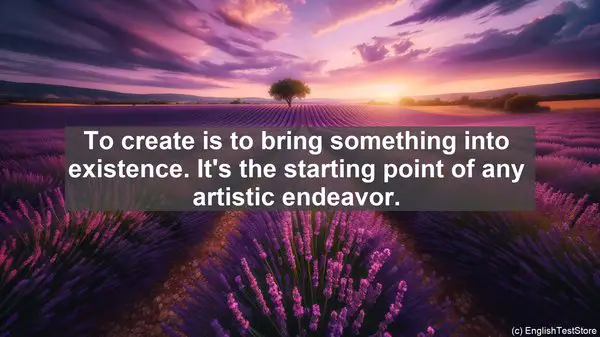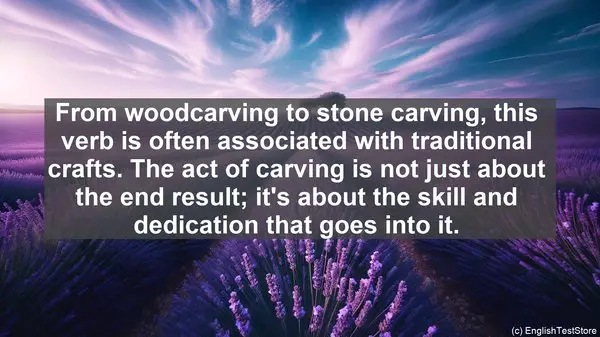Introduction: The Beauty of Traditional Arts and Crafts
Traditional arts and crafts are not just about creating something beautiful; they are a reflection of our culture and heritage. Whether it’s the intricate patterns in a tapestry or the delicate strokes in a painting, every piece tells a story. Today, we’ll focus on the language aspect of these crafts and explore the top 10 English verbs that will enrich your conversations in this domain.
1. Create: The Foundation of Artistic Expression
To create is to bring something into existence. It’s the starting point of any artistic endeavor. When you create, you’re not just making something; you’re pouring your emotions and ideas into it. So, whether it’s a sculpture or a piece of jewelry, the verb ‘create’ encapsulates the essence of the process.
2. Carve: The Art of Precision
Carving is a technique that involves removing material to shape an object. It requires precision and patience. From woodcarving to stone carving, this verb is often associated with traditional crafts. The act of carving is not just about the end result; it’s about the skill and dedication that goes into it.
3. Preserve: Safeguarding Our Heritage
Preservation is crucial in the realm of traditional arts and crafts. It’s about ensuring that these age-old techniques and knowledge are not lost to time. Whether it’s through documentation or active practice, the verb ‘preserve’ signifies the efforts made to safeguard our cultural heritage.

4. Adorn: Adding Beauty and Detail
To adorn is to decorate or embellish. In traditional crafts, adorning is often done using intricate patterns, vibrant colors, or precious materials. It’s about adding that extra touch of beauty and detail to a piece, making it visually captivating.

5. Weave: The Art of Interlacing
Weaving is a technique that involves interlacing threads to create a fabric. It’s a skill that has been passed down through generations. The verb ‘weave’ not only represents the physical act but also the interconnectedness and continuity that these crafts symbolize.
6. Dye: Infusing Colors and Life
Dyeing is the process of adding color to a material. In traditional crafts, natural dyes are often used, derived from plants or minerals. The verb ‘dye’ encompasses not just the act of coloring but also the transformative effect it has on the material, giving it a new identity.
7. Sculpt: Shaping Three-Dimensional Art
Sculpting is the art of creating three-dimensional forms. It can be done using various materials like clay, stone, or metal. The verb ‘sculpt’ denotes the meticulous process of shaping and molding, often requiring a deep understanding of form and proportion.
8. Etch: Leaving a Lasting Impression
Etching is a technique that involves creating designs or patterns on a surface, often using tools or chemicals. It’s about leaving a mark, a lasting impression. The verb ‘etch’ not only signifies the physical act but also the significance and impact of the mark made.
9. Restore: Breathing New Life into the Old
Restoration is a vital aspect of preserving traditional crafts. It’s about repairing or rejuvenating an old piece, ensuring its longevity. The verb ‘restore’ encapsulates the idea of giving new life to something that holds historical or cultural value.
10. Exhibit: Sharing the Beauty with the World
Once a piece is created, it’s often exhibited, allowing others to appreciate its beauty. The verb ‘exhibit’ signifies the act of showcasing, whether in a gallery, museum, or any other setting. It’s about sharing the craftsmanship and the story behind it with a wider audience.
